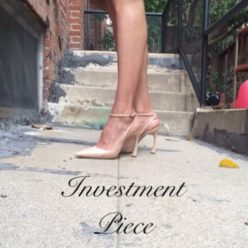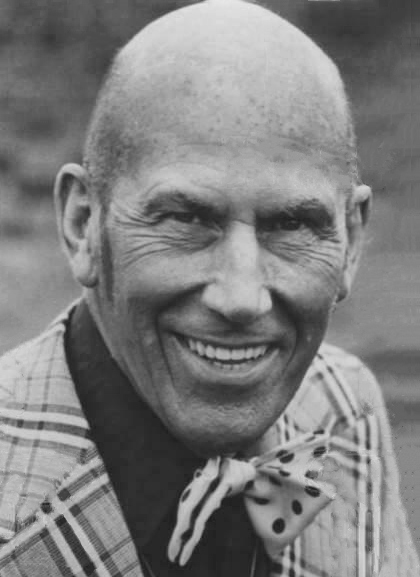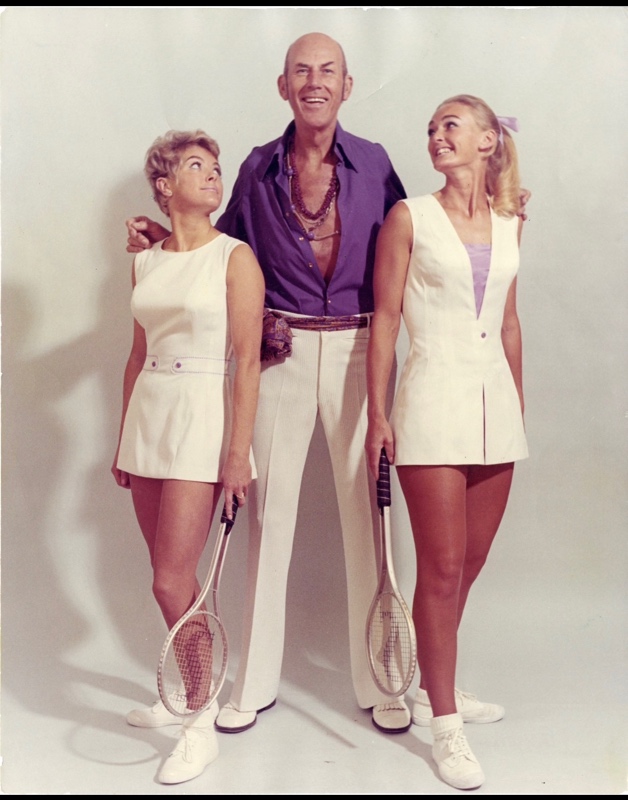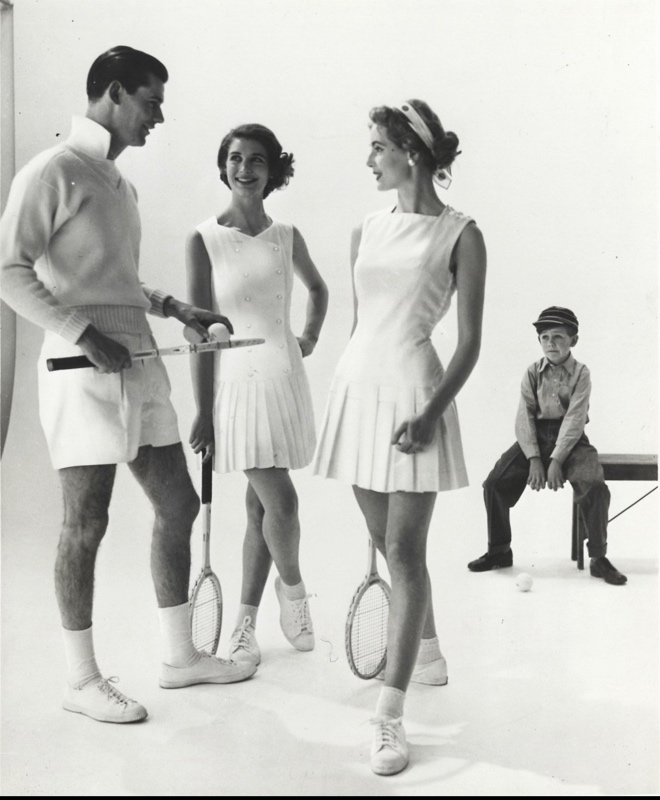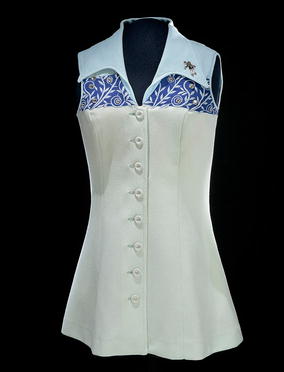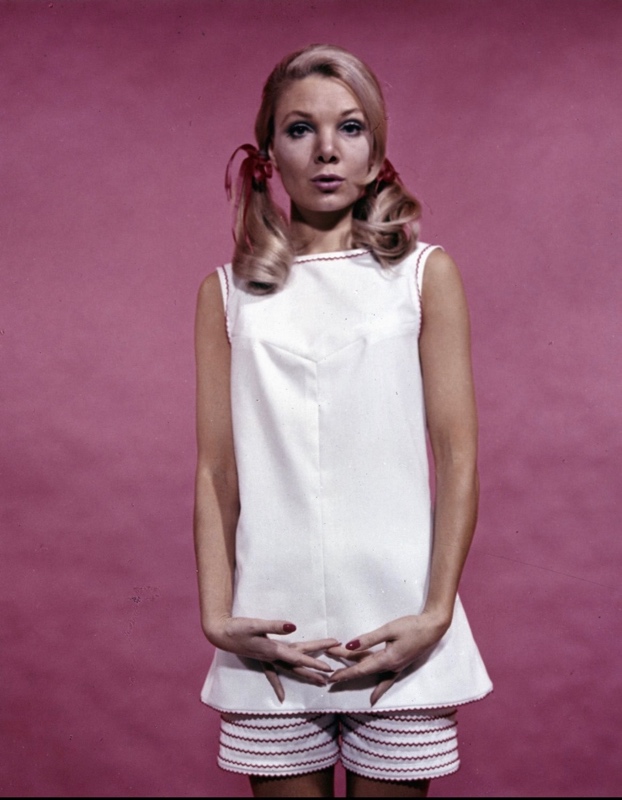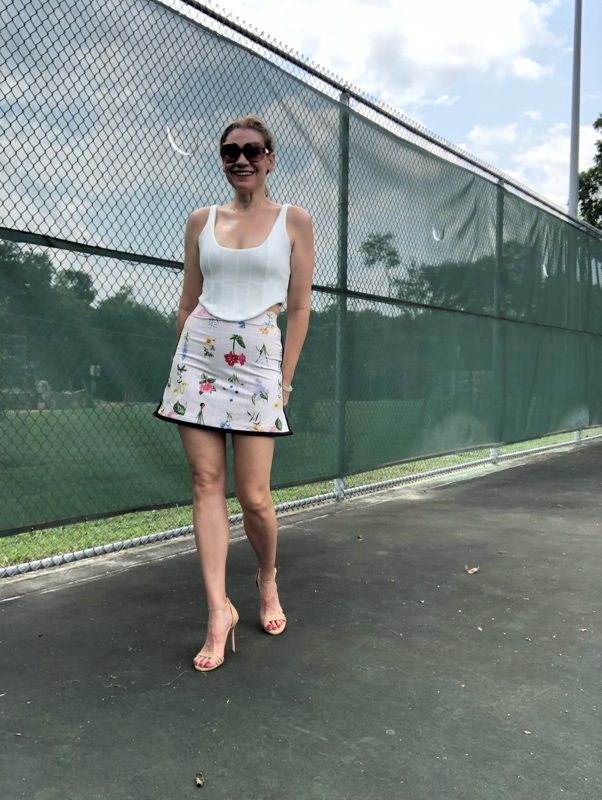One thing that I absolutely love about this job is that I get to learn things, along with you. In this month’s research for designer spotlight I stumbled across this article on Norman Norell and his impact on American fashion. I was fascinated. And when I’m fascinated, I can’t help but share. So, here (originally posted on WWD) is all about Norman Norell. I hope you enjoy as much as I did!
Norman Norell’s Lasting Influence on American Fashion
The Illinois-born Norell began designing costumes at Paramount Pictures in Astoria, N.Y., before staking his claim in the American fashion landscape on Seventh Avenue.
By Rosemary Feitelberg and Andrew Nodell on February 1, 2018

NEW YORK — Like Norman Norell’s more dedicated clients, author Jeffrey Banks and WWD executive editor Bridget Foley had a lot to unpack in discussing how the son of a hatmaker became America’s first great designer.
Even the Q&A’s location — Parsons School of Design, The New School — called for footnotes. Executive Dean of Fashion Joel Towers informed the industry-heavy crowd that Norell studied there and later taught from 1948 to 1972. In advance of next week’s opening of a Norell exhibition at the Museum at the Fashion Institute of Technology, Banks talked about his new Rizzoli-published book “Norell: Master of American Fashion” and the designer’s lasting influence.
The audience — which included Anna Sui, Stan Herman, Rebecca Moses and Bibhu Mohapatra — listened intently about Norell’s forays into buy-now-wear-now, cruisewear, pants and other men’s wear-inspired looks for women and black-tie runway shows with Champagne and strawberry intermissions. Unlike designers of today, Norell didn’t socialize with his customers and was more inclined to spend nonworking weekends antiquing or going to the theater. The “very shy” designer lunched at Schraft’s or Hamburger Heaven with a small coterie of other Seventh Avenue designers, and he sketched away endlessly. And retailers were always part of the equation with private clients like Lauren Bacall, whose purchases were routed through the stores that supported him throughout his 51-year career.
Banks said, “Norell was such an important person in the history of American fashion. I think he really changed the way ready-to-wear is viewed and certainly on the world stage the way American designers are viewed.”
Banks also wound up as a Parsons student, due to Norell. While working for Ralph Lauren, he was enrolled at Pratt. “One day my teacher at Pratt said, ‘I don’t know if you saw in the paper today that Norman Norell died.’ This girl raised her hand and said, ‘Who’s Norman Norell?’ I said, ‘I’m outta here.’ I literally picked up my books, went to the dean’s office and transferred to Parsons. I’d been thinking about it, but that was it,” Banks said.
Following Norell’s sudden death in 1972, the designer’s legacy largely faded. Banks’ motivation in publishing the Rizzoli title, which is the first book of its kind dedicated to Norell’s work, was to inform younger generations — “especially people in the fashion business” — of his artistry. “I don’t think you can go forward as a designer without knowing where you came from,” Banks explained. “It’s only by knowing the rules that you can then break the rules.”
In an interview with WWD, Ralph Rucci, who wrote the forward for “Master of American Fashion,” described Norell as “the American Balenciaga” in his “masterful simplicity, make, cut and fit of clothes.” Rucci went on to compare the way in which the American and Spanish designers would construct an armhole, adding, “The armhole being a symbol of such precision.”
“Norell would give a 14-inch hem on dresses for balance and weight when, say, a chiffon hem would normally just be an edge stitch.”
But it wasn’t all for looks, explained Banks, who said the generous hem was also intended for lengthening and shortening a garment by the client, who paid generously for the detailed craftsmanship. “Women bought his clothes and treated them the same way they would treat artwork they would buy,” he added.
Kenneth Pool, another designer in the audience, loaned the six Norell ensembles from his 100-piece collection that bookended the stage on mannequins. Pool’s focus is from 1960 on, after Norell “finally owned his own business and was able to buy out his investors,” Banks said. “Even though he was 60 years of age, I believe he got this incredible burst of creativity for the next 12 years of his life.”
After Foley noted how the quality designs had stood the test of time, Banks pointed out how Norell was averse to American fabrics, buying only the finest ones — including Linton (which Banks said makes Chanel tweeds to this day), Gandini and Taroni for his designs and linings. As a young man Banks was so mesmerized by one Norell dress with a fireworks-like lining in a store window that he examined it daily during its two-week display.
Referring to Norell’s 9 p.m. fashion shows in his 550 Seventh Avenue showroom, Foley said, “I must say that when I was reading this, there were two words that stuck out in my mind, ‘Black-tie — photographers included,’ and the other one — think of this in the era of the 12-minute show — ‘intermission.’”
The shows themselves were also on Norell’s own timetable. In those days, like today, collections would be shown in New York before the industry’s attention moved to Europe. But rather than show with other designers, Norell — along with James Galanos — would require buyers and editors to return to New York for their shows. “They wanted to separate themselves from the rest of American fashion,” continued Rucci. “The two of them were the closest we had to haute couture in this country. They were really mavericks.”
Banks mentioned how the routine was also to have another show “for lesser buyers” the following day. An ardent Norell client, Lauren Bacall, could be seen front-row in a lengthy video clip of a 1968 Norell show. Daytime clothes were showcased in the first half, followed by an intermission for Champagne and strawberries, before the eveningwear-centered second half.
Sixty-five to 100 looks would be modeled by his four-woman cabine of “Norell girls” who worked for him almost exclusively for runway and showroom appointments. “They literally floated down the runway, walking on tippy toe. How they changed so quickly [shoes, gloves and hats as well as clothes] is just mind-blowing to me,” said Banks.
Norell was forward-thinking when it came to selecting these recurring models, who would often have similar hairstyles to each other but would be of various body types. “He was very smart in understanding that women who wore his clothes were of different sizes, heights and ages,” added Banks.
Asked what Norell would think of the fashion shows today, Banks said, “He would be very, very disappointed. I’ve posted some pictures of the black-tie openings on Facebook and Instagram and people have said, ‘Look at how beautifully that front row is dressed. There are no sneakers, no telephones, no movie stars — they’re actually looking at the clothes.’ Look at the intimacy of the show. You could literally reach out and touch the fabric. The whole point of this was the clothes — not the girls, not the spectators, not the celebrities.”
Reminded how Norell was known to deconstruct Balenciaga designs, Banks said, “All of the designers on Seventh Avenue at that time would go to Europe. Many of them to buy things, most of them to copy things. Norell would go, and every once in a while he would buy a number from Givenchy or Balenciaga, but it wasn’t to copy them. It was to actually see the construction. He would take them apart, look inside and really see the technique. He brought couture techniques to ready-to-wear.…The prices were exorbitant for the time. A jersey dress, which was really the backbone of his collection, was $500 or $600. But women loved those clothes and knew they were an investment.”
Banks added, “Norell said, ‘Bust darts are the sign of a home sewer,’” adding that the designer avoided them by taking a vertical fold of fabric, have it go inside the armhole with handstitched facing to give the wearer enough ease for the bust without “that pointy, bullet-bra look that was very popular in the Fifties and Sixties.”
As a child, Norell was a fan of vaudeville’s razzle-dazzle and his first job was with Paramount Pictures in Astoria, before it moved to California. In 1921, at the age of 21, Norell designed for Rudolph Valentino and in 1923 for Gloria Swanson in “Zaza.”
Born Norman David Levinson in Noblesville, Ind., (a state that also produced Bill Blass, Halston and Stephen Sprouse), Norell decided he needed a name with more flair after moving to New York at the age of 19. “He took the ’Nor’ from Norman, the ‘el’ from Levinson and he added an extra ‘l,’ as he said, for luck,” Banks said. Norell’s former boss Hattie Carnegie took a different tack after arriving to Ellis Island from Poland, having asked officials, ‘Who is the richest man in America?’ When told that was Andrew Carnegie, she said, ‘That’s my last name.’
An entrepreneur with a great eye,” Carnegie had 12 designers working for her initially in her East 49th Street multifloor salon. She employed 1,000 people even during the Depression. Norell learned his skills there, accommodating Park Avenue ladies who would make such requests as, “‘My husband bought me an emerald necklace and I need a dress to go with it,’” Banks said. Norell started visiting Europe with Carnegie, who was known to buy 200 items during such an excursion.
On his own, Norell was inspired by men’s wear, and introduced pants before Yves Saint Laurent, and later added “what we know as culottes,” Banks said. When Foley mentioned how Norell became “the person to knock off in New York,” he knew if he was going to be knocked off, he wanted to be knocked off properly. So the designer ran an ad in WWD advising any manufacturer that wanted to knock his culottes off that he would give them the pattern, Banks said.
In 1943, Carnegie was commissioned to do the clothes for Gertrude Lawrence in the Broadway musical “Lady in the Dark,” about a fashion editor undergoing psycho analysis. “Apparently, in the Forties, if you had money that was a big deal. That was trendy thing to do and get shrunk,” Banks quipped.
Norell was tasked with sketching costumes, but Carnegie disapproved, suggesting he tone them down. Norell sidestepped his boss and showed Lawrence the originals, which she loved. That resulted in a parting of ways with Carnegie, and Norell teaming up with a financial partner, Antony Traina, in 1941 and stayed with him until 1959. During the war years, American designers had to restart their industry since they were no longer able to rely on European fabrics, Banks said. Wartime fabric restrictions prompted slimmer skirts just above-the-knee and while metals were rationed, sequins were not. “He was very smart because he could make these clothes look very dramatic, elegant and beautiful without a lot of money,” Banks said.
One turning point in his career came when Norell started buying fabric upfront for his signature dresses, which enabled seamstresses to start making them the day after his runway shows so they could be delivered months before the rest of the collection. “That was the engine that kept the business going,” Banks said. Foley noted how it was a precursor to the buy-now-wear-now shows.
She also pointed out how Norell was inspired by the Marchesa Casati in 1960, whereas only years later did designers like John Galliano, Alexander McQueen, Sui and Dries van Noten look to her.
In 1972, the-then 72-year-old Norell was given his due with a one-night-only retrospective at the Metropolitan Museum of Art. “I was working for Ralph Lauren while I was going to school and I begged him to get tickets for this. He said, ‘Who is this Norell?’ I said, ‘He is just the greatest designer in America,’ which is not what your boss wants to hear. But he got the tickets anyway,” Banks said. “At the end of the show, the lights went out — this was a live show of his clothes from the Twenties through the Seventies — and you saw something twinkling in the dark like fireflies. When the lights came up, there were 60 girls in mermaid dresses in every color of the rainbow from every decade.”
The audience was “literally like they were at a basketball game, stamping their feet, yelling, screaming” when a man came out in a tuxedo whom guests thought was about to introduce Norell. Instead, he said, ‘Ladies and gentlemen, I regret to inform you that Norman Norell had a stroke yesterday,’” Banks said. Ten days later, the designer died.
As for what Norell would have considered to be his greatest contribution to fashion, Banks said, “Making women look attractive — that is all he ever cared about — making beautifully well-made clothes.”
The orginal article has the best picture gallery. I hope you enjoyed this reposted article, and I hope that you visit the site and see the most amazing fashion!
XO RA
